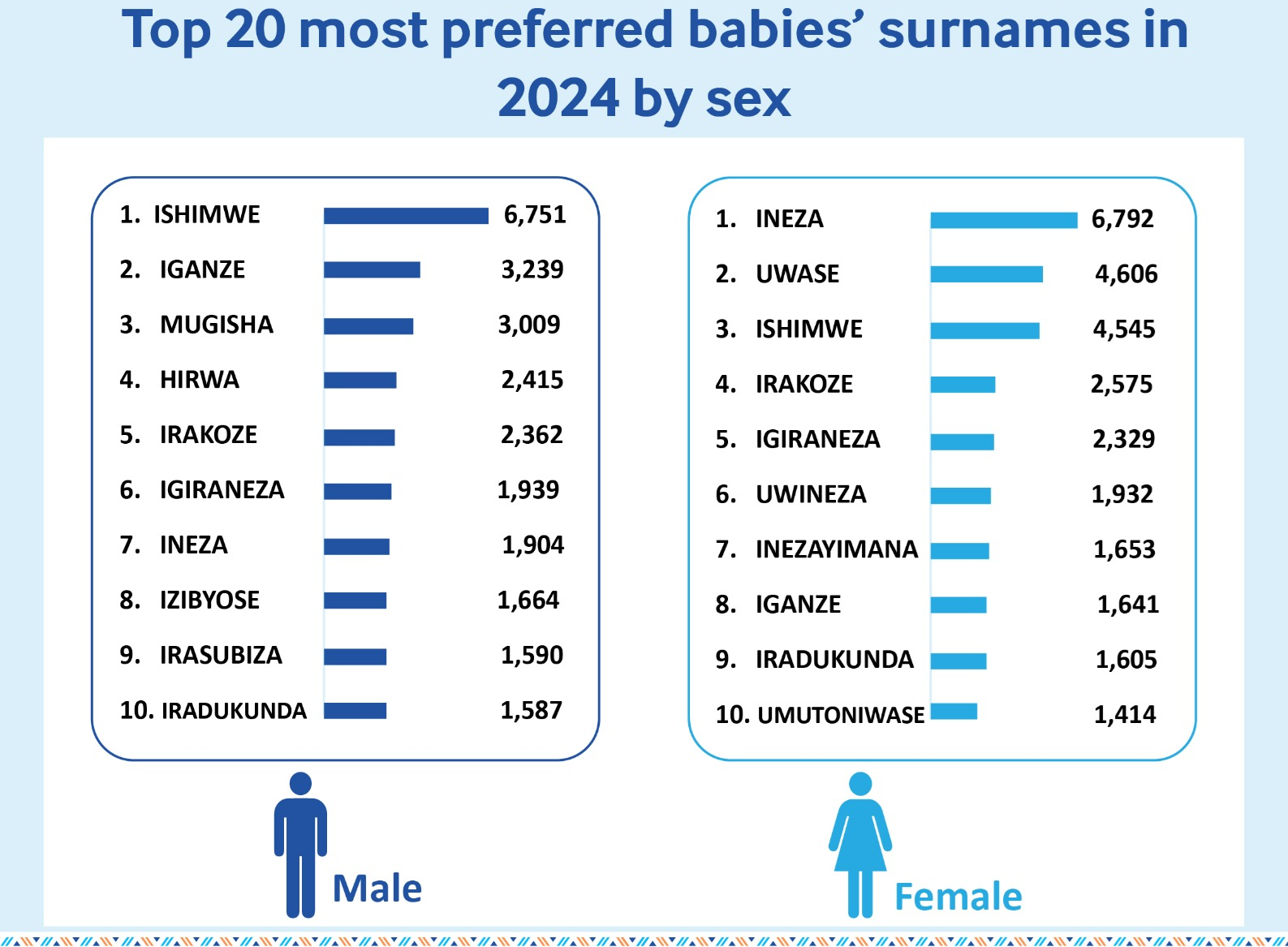Birth statistics
Birth registration completeness at the national level remained relatively stable with rates 90.0% in 2023 and 90.3% in 2024.
Births registered beyond one year are considered delayed registrations. The trend in timely birth registration from 2019 to 2024.
The proportion of timely registered births increased from 78.0% in 2019 to 99.1% in 2024, while late registrations declined from 22.0% in 2019 to 0.9% in 2024.
The 2024 report shows that number of registered births varies significantly across districts of whereas four districts recorded more than 15000 births with the highest number in Gasabo (24,641) followed by Nyagatare (18,521), Rubavu (15,976) and Bugesera (15,799) as illustrated in map below. In contrast, the lowest numbers are observed in Nyabihu (7,980), Ngororero (7,976) and Nyamagabe (7,906) districts and more.

The most significant improvement in timeliness of birth registration started in 2021 where timely registered births increased to 93.7% from 72.3% in 2020.
Death statistics
The number of deaths registered increased from 27,010 in 2022 to 40,704 deaths in 2024 . The completeness of death registration was found to be 46.1% at the national level a significant increase from 41.8% in 2023.
The CRVS system generated data in 2024 indicates that among registered deaths, a high proportion occurred at the community level in rural areas (59.3%) compared to health facilities registered deaths (40.7%) while in urban areas, health facilities deaths represent 62% compared to the 38% at the community level.
Cause of Death Statistics
Prior to October 2017, medical doctors in Rwanda were not trained in certifying causes of death according to international standards. The 2016 World Health Organization (WHO) International Medical Certificate of Cause of Death (MCCoD) was not used in health facilities and the quality of cause of death data was not advanced with many deaths attributed to ill-defined causes which are of little utility for public health decision making.
The analysis of the 2024 CRVS mortality data using ANACoD3 revealed that 64.7% of deaths were assigned to usable causes, consistent with the previous year. However, ill-defined causes of death remained high at approximately 35.3%.
The World Health Organization recommends that ill-defined causes should not exceed 10% of deaths at age 65 and above and should be 5% for deaths among individuals below 65 age groups.
Marriage statistics
The data generated by NCI-CRVS system indicate that a total of 52,878 marriages were registered in 2024. The data further reveal that the highest numbers of marriages were recorded in Gasabo (5,543) and Gicumbi (2,550) districts, while the lowest numbers were observed in Rutsiro (1,394) and Burera (1,360) districts.
Community of property is the most frequently chosen marriage regime across all husbands’ education levels. Across education levels, the table shows that community of property regime is most frequent among males who attended Primary or upper secondary 96.7% and less frequent among those who attended preschool (38.4%).
